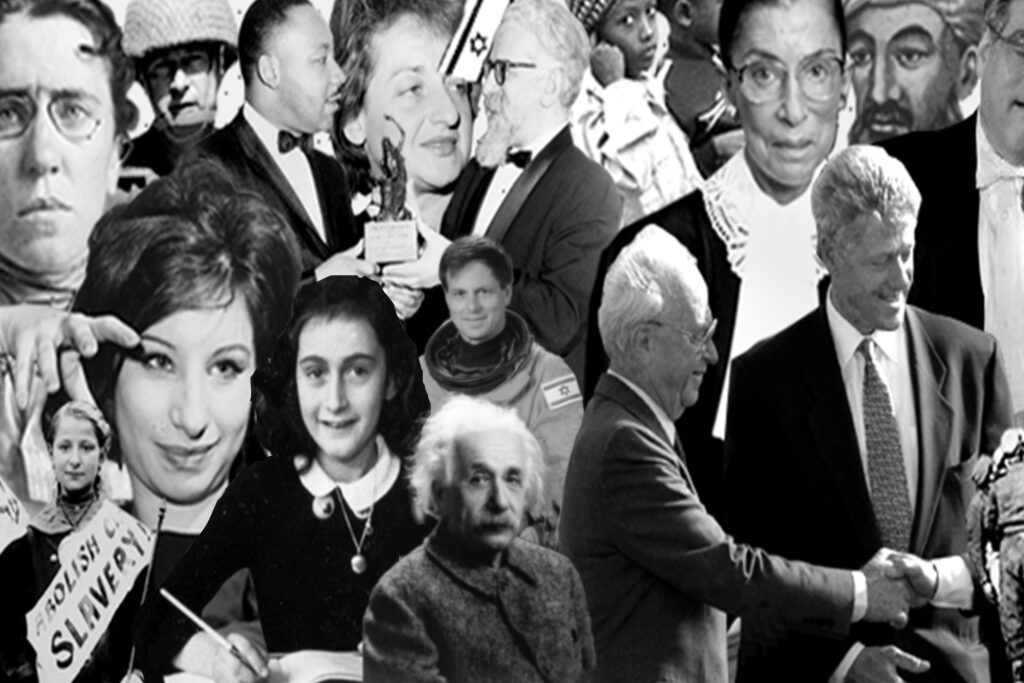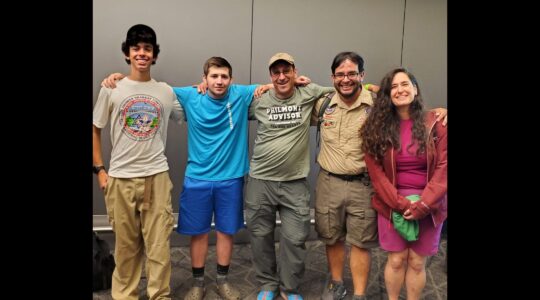NEW YORK (JTA) — On a fall day in 1963, Abraham Joshua Heschel unburdened his soul.
Speaking the truth without regard for whether it scandalized or hurt was something he would do fairly often in that decade of social upheaval. Already branded as an eccentric and an outsider, that year he had met the Rev. Martin Luther King Jr. for the first time, beginning a close friendship that would deepen his involvement in the civil rights movement. The two eventually would offer the most endearing and enduring image of the now long dead black-Jewish alliance when they walked arm and arm to Selma, Ala., in protest, garlands of flowers around their necks.
But in September 1963, Heschel’s audience was Jewish – a gathering of rabbis at the Jewish Theological Seminary in New York. His speech would be read aloud that Yom Kippur at hundreds of congregations across the country. It was a sermon that set in motion one of the great engines of what would soon be known as the Soviet Jewry movement: guilt.
Heschel was angry and ashamed that American Jews were not more engaged in helping their brethren in the Soviet Union. There was mounting evidence that these Jews were stuck in an increasingly untenable situation. Every element of their Jewish identity, from religious life to cultural expression, had been brutally squashed. At the same time, the avenues to assimilation were blocked – if nothing else, their internal passports singled them out for discrimination by identifying them as Jews. The option of abandoning the Soviet Union for good was not even a possibility.
Heschel looked at the Jews of America – most of them themselves only two generations removed from the Pale of Settlement – and could not believe that they were responding with little more than sadness and resignation
“What is called for is not a silent sigh but a voice of moral compassion and indignation, the sublime and inspired screaming of a prophet uttered by a whole community,” Heschel lectured the assembled rabbis.
Then he made his most searing argument. This was not the first time that American Jews had been impotent when it came to helping other Jews, Heschel told them.
“We have been guilty more than once of failure to be concerned, of a failure to cry out, and failure may have become our habit,” he told them.
Heschel was referring, of course, to the Holocaust. And it was effective. Whether or not American Jews deserved to bear this historical burden – whether there was anything more they could have done – is irrelevant. In the early 1960s, just as consciousness of the extent of the genocide was bubbling up, so too was a painful recognition that as millions of their brethren were murdered in Europe, this increasingly stabile and prosperous community could hardly organize themselves to put on a single rally.
This guilt would blossom into what for some time now has been an obsessive concentration on the Holocaust, one that many have rightly come to see as an extremely corrosive development – the constant memorializing eclipsing so much else about Jewish identity. But what has been forgotten is that before every Jewish community had its own memorial and museum, there was the guilt and the need to do something about it.
I’ve been exploring the Soviet Jewry movement over the past five years for a forthcoming book. Throughout its 25-year history, the need to caste away this heavy burden was present at nearly every moment. But I also came to see it as a positive element. American Jews mobilized, went up against an American administration and became a more assertive community partly as a way of clearing their collective conscience.
Guilt was present when a group of NASA scientists in Cleveland, Ohio, decided in 1963, after reading the then slim literature of the Holocaust, that they had to do something for those Soviet Jews now suffering “spiritual genocide” and started the first grass-roots Soviet Jewry group. It was also present in New York the following year at the inaugural mass meeting of what would soon be known as the Student Struggle for Soviet Jewry. One of the students offered to sing a ditty he had come up with for their first protest. Its refrain was “History shall not repeat.”
Guilt, leavened with anger, also was present in Rabbi Meir Kahane’s slogan “Never again,” when he hijacked the movement in the early 1970s. In 1971 he rallied a thousand young people to be arrested in Washington, D.C., near the Soviet Embassy with the words, “I’m asking you to do today what Jews didn’t do while the gas chambers were burning. Sit down in the streets of Washington.”
And in 1987 when a quarter-million people marched in Washington for Soviet Jewry, greeting Gorbachev on his first visit to the United States, guilt dripped from Elie Wiesel’s words: “Too many of us were silent then. We are not silent today.”
But this guilt was not about wallowing. It was directed, focused. I heard the same line from the many activists I interviewed for the book: They did not want their children to ask the same question of them that they had asked their parents: What had they done to help Jews during the war?
As a result, the movement acted as a sort of catalyst. By cleansing the conscience, it allowed these Jews to be assertive. It emboldened them to act with a confidence they had never before exhibited on American soil.
Never was this truer than during the fight for the Jackson-Vanik amendment from 1972 to 1975. The Jewish community went up against the president – and won. They wanted Richard Nixon and Henry Kissinger to temper their pursuit of detente and make any improved trade relationship with the Soviets contingent on freer emigration.
Here, too, the Holocaust was not far away. The amendment was inspired by a new tax the Soviets wanted to levy on departing emigrants: They would have to pay back the state for their education.
An editorial cartoon in the Los Angeles Times captured the feeling this tax inspired by showing a caricature of two almost identical prisoners: The first held out an arm tattooed with a number from a concentration camp and was captioned “Germany, 1936′; the second had the same tattooed arm and was captioned “Russia, 1972.” The difference was the numbers on the second arm had a dollar sign in front of it.
American Jews made this guilt productive. The Soviet Jewry movement became as much about saving themselves as it was about saving this far-off community of Jews.
When I started working on the book, I was drawn by a need to understand the world after the war. My grandparents all survived death camps and lost much of their families. And yet, by the time I knew them, they had raised families and were happy, well-adjusted people.
As curious as I was about what happened to them in those camps, I also wanted to understand what went into this transformation. The same was true on a much larger scale. How did American Jews scrub out that terrible stain?
The answer, it seems, was contained in the Soviet Jewry movement. Here Jews were able to work out those feelings, answer Heschel’s lament.
A few months before his speech in 1963, a reporter from the Yiddish newspaper the Day-Morning Journal asked Heschel where he had been in 1943. He answered mournfully that he had just arrived in America, did not speak the language well and commanded no attention from the Jewish leadership.
Still, he said, “This does not mean that I consider myself innocent. I am very guilty. I have no rest.”
If not for him, then for the next generation, Soviet Jewry offered that rest.
(Gal Beckerman is a writer at the Forward and the author of "When They Come for Us, We’ll Be Gone: The Epic Struggle to Save Soviet Jewry," in bookstores Sept. 23.)

Help ensure Jewish news remains accessible to all. Your donation to the Jewish Telegraphic Agency powers the trusted journalism that has connected Jewish communities worldwide for more than 100 years. With your help, JTA can continue to deliver vital news and insights. Donate today.





